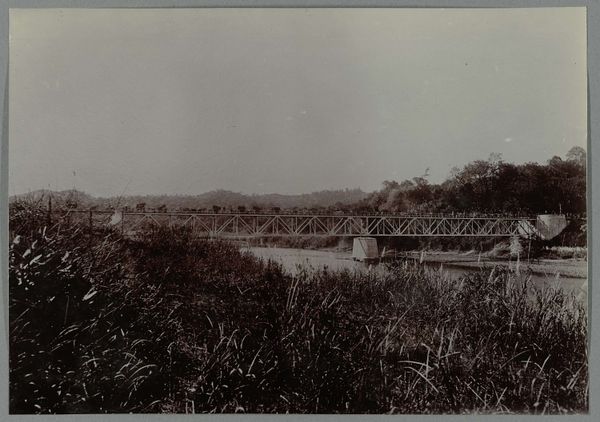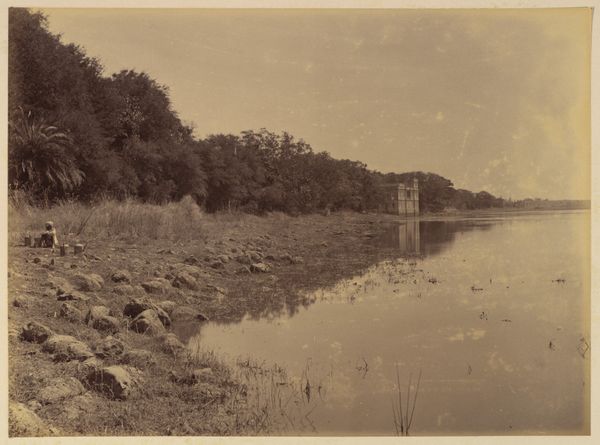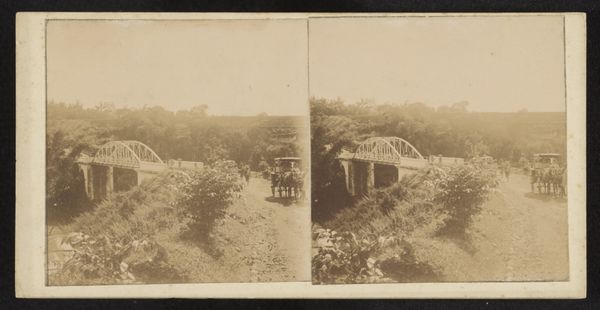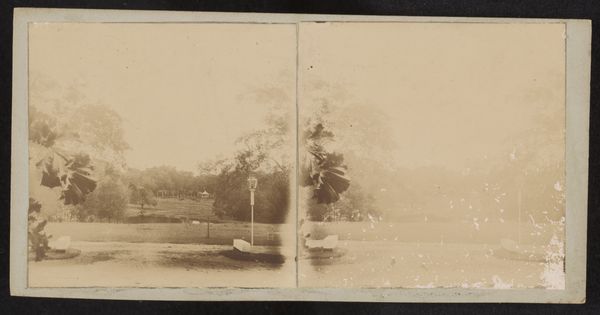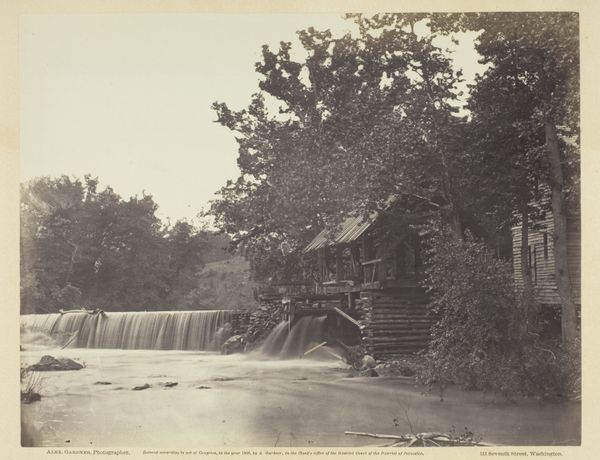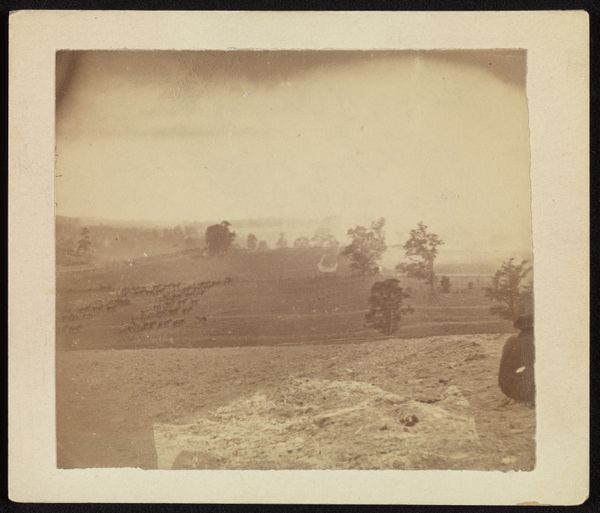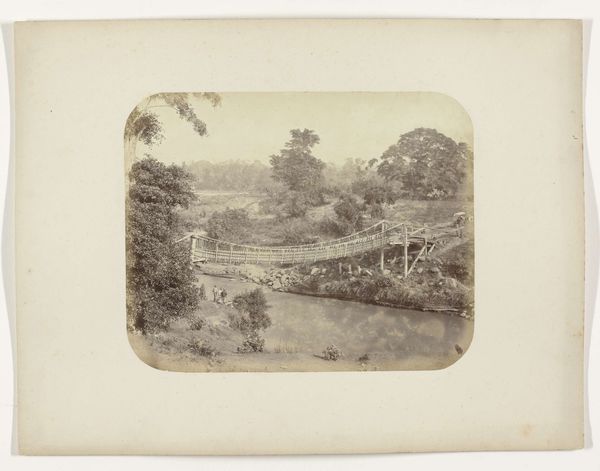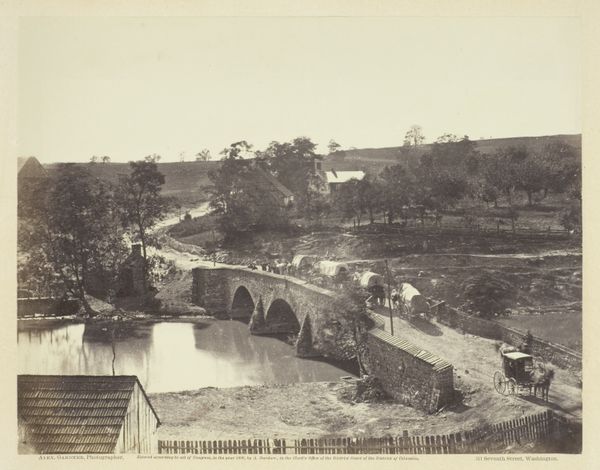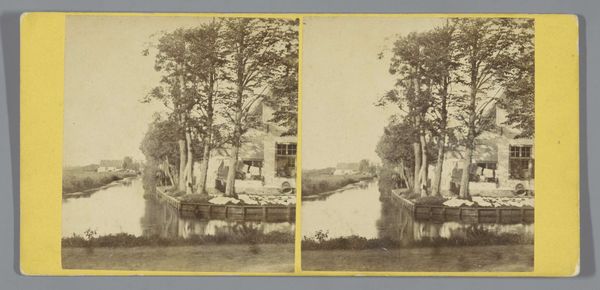
print, daguerreotype, photography, albumen-print
# print
#
landscape
#
daguerreotype
#
photography
#
albumen-print
Dimensions: 8.2 × 7.7 cm (each image); 8.7 × 17.8 cm (card)
Copyright: Public Domain
This untitled photograph captures a simple bridge, likely made in the late 19th century using the stereograph technique. The bridge, a symbolic connector, has appeared in various forms throughout history, from the Pontifex Maximus—the "greatest bridge-builder"—of ancient Rome to the precarious crossings in Turner's tumultuous landscapes. Notice how this bridge, in its stark simplicity, invites reflection on transitions and passages. Bridges, inherently liminal spaces, have long held psychological significance, embodying the crossing from one state to another—life to death, known to unknown. They act as conduits for both physical and metaphysical journeys. The bridge, like the ouroboros—the snake eating its tail—represents a cyclical journey, a return. Over time, its symbolic weight shifts; the material bridge becomes a potent metaphor for enduring cultural and psychological phenomena, continuously resurfacing in our collective consciousness.
Comments
No comments
Be the first to comment and join the conversation on the ultimate creative platform.

